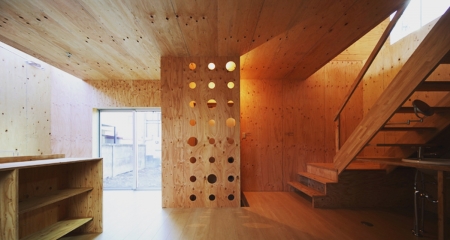ルーティンの中の気分
日常の中で誰でも何かしらのルーティンを持っているだろう。例えば、朝のルーティンと称して、起きてから仕事をはじめるまで、決まった段取りで、決まった行動をする。
ただ、毎日同じように決まった行動をするかもしれないが、その行動をする時の気分は毎日違うだろう。
となると、もしかしたら、ルーティンの中に毎日違う気分に合わせる何かを含めている人もいるかもしれない。例えば、毎朝飲むコーヒーのカップは気分で毎日変えているなど。
建築はルーティンを形成する上で、動線や設えなどを担保する。そこで、建築が毎日変わる気分にも対応するというか、呼応して、同じルーティンの繰り返しの日常の中に、何か変化をもたらすことができたならば、それは人と建築がリニアにつながる瞬間だと思う。
具体的には、人の気分によって、建築の何かが変わる、とうことであり、人が気分によって何かを選択することにより、それに呼応して建築の何かが変わるか、変わったように見えることである。
その何かを今、壁に求めて試行錯誤をしている。
"Mood in the routine"
In everyday life everybody will have some sort of routine. For example, you call a morning routine and take a fixed action in a certain arrangement from waking up to starting work.
You may do the same thing every day, but you will feel different every day.
Perhaps some of your routines include something that adapts to different moods every day. For example, the cup of coffee you drink every morning changes every day depending on your mood.
In building the architecture, the flow lines and installations are secured in forming the routine. So, if we can respond to the mood that architecture changes every day, and if we can make something change in the repetitive daily routine of the same routine, that is the moment when people and architecture will be linearly connected. I think.
Specifically, something in the architecture changes depending on the mood of the person, and if the person chooses something according to the mood, something in the architecture changes in response to it. It is visible.
I'm trying and trying to find something on the wall now.

